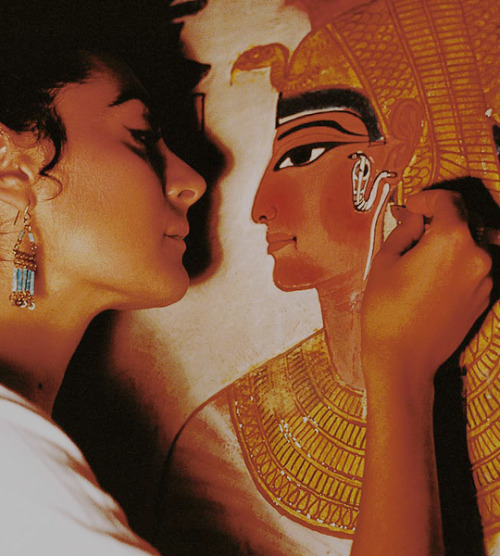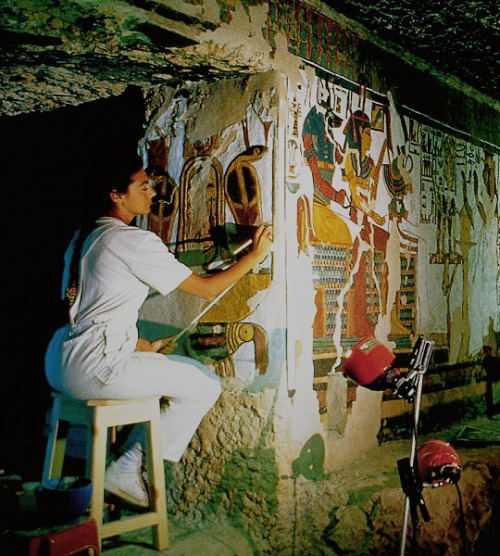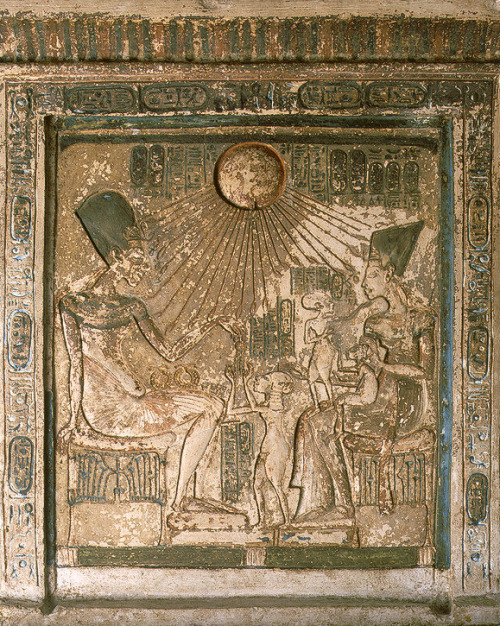#egyptian archaeology
Italian conservator Lorenza D'Alessandro working on the conservation of the tomb of Nefertari, QV66, in the 1980s.
Post link
If you’re an Archaeologist/Anthropologist in any stage of your career, please join the I Dig It discord server! https://discord.gg/T7BPe36
This community of archaeologists and archaeology enthusiasts includes people from all corners of the world and many different sub fields of archaeology!
Here you can ask specific questions to the community about things like: fieldwork opportunities, undergrad/grad school, jobs on the market, conferences, as well as join in on Lectures and Conferences that are posted in the chats.
This discord started as a chat for our Podcast: I Dig It, which can be found at archaeologypodcastnetwork.com
https://discord.gg/T7BPe36

Queen Tiye’s head with a feathered crown from the Amarna Period (18th dynasty), yew wood, lapis lazuli, silver, gold and faience, ca. 1355 B.C, Egypt.
Tiye was the spouse of Amenhotep III, mother of Akhenaten and grandmother of Tutankhamun. She is represented with great realism and we can see her very distinctive features in the typical Amarnian style.
This head has had two different hairstyles over time and they have been modified for unknown reasons. The original one was probably a khat,which was a head cloth worn by the nobility. We can still see traces of its ornaments on Tiye’s forehead where the golden uraeus were attached. The khat let the ears bare and that’s why the queen is depicted wearing golden earrings. Interestingly, the khat was actually reserved to goddesses: Tiye and Nefertiti are the only mortals to have ever been represented wearing one.
The second hairstyle is the one we can still see today. For unknown reasons the first hairstyle was destroyed and its remnants were covered by a linen wig that hid the earrings.
This head was probably meant to be attached to a body that has not been discovered.
Photo by Steven Zucker / Courtesy of the Egyptian Museum of Berlin
Post link
Painted limestone stela, ca. 1353-1336 BC, El-Amarna, Egypt.
This limestone stela shows King Akhenaten and his family as a “Holy Family.” It is considered to be an icon and was intended to be kept in a private chapel of an Amarna house. The stela, topped by the cavetto cornice, is decorated with a scene of an intimate moment from the daily life of the royal family under the protection of Aten. - globalegyptianmuseum.org
Post link




